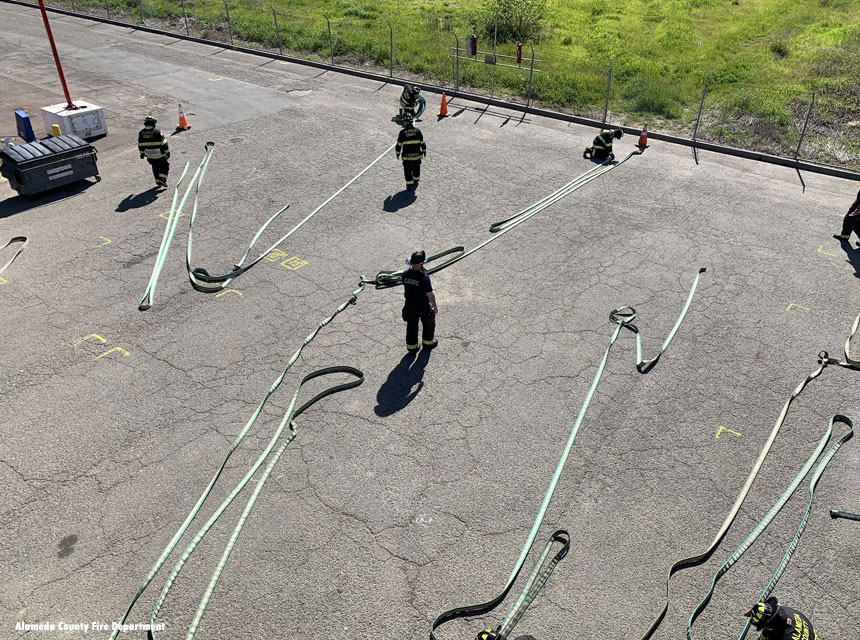
The previous Fire Service 101 article explored some optional fire academy modules such as confined space, vehicle extrication, and interior live burns. This month we will cover what is considered the “bread and butter” of fireground operations—hoseline deployment and management and water supply. We will also cover what to expect at a fire academy graduation. Let’s get right to it!
The fire service is a unique combination of tradition and innovation; nowhere is this more apparent than in the study and practice of hoseline deployment and water supply. These are two elements that work together to form the most important part of fire suppression activities—the ability to put the water on the fire. This will also be heard as “putting the wet stuff on the red stuff.” Although there is a huge body of information to be learned on this topic and constant hands-on training to be done throughout a firefighters’ career, the fire academy will focus on how these pieces of equipment operate individually and what is needed to get them to work together in order to save lives and preserve property.
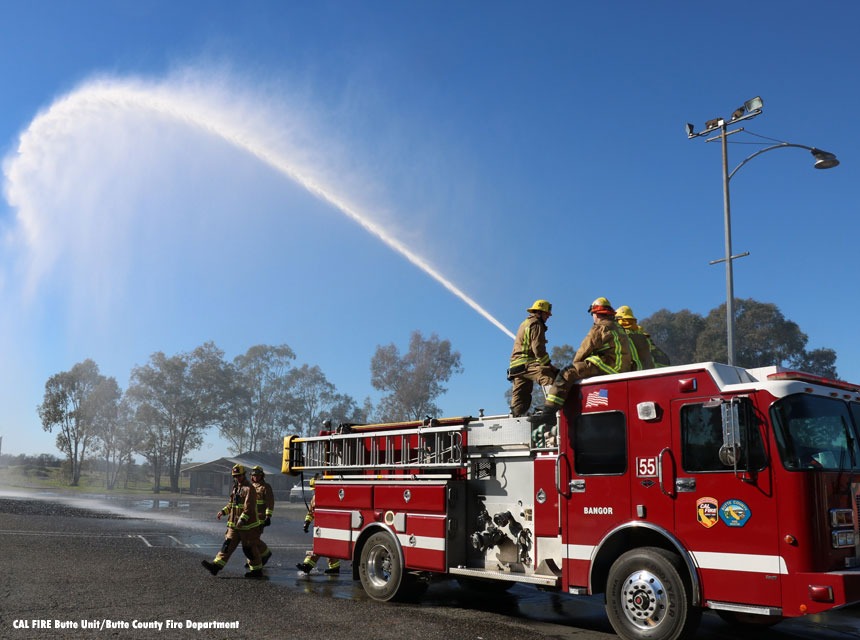
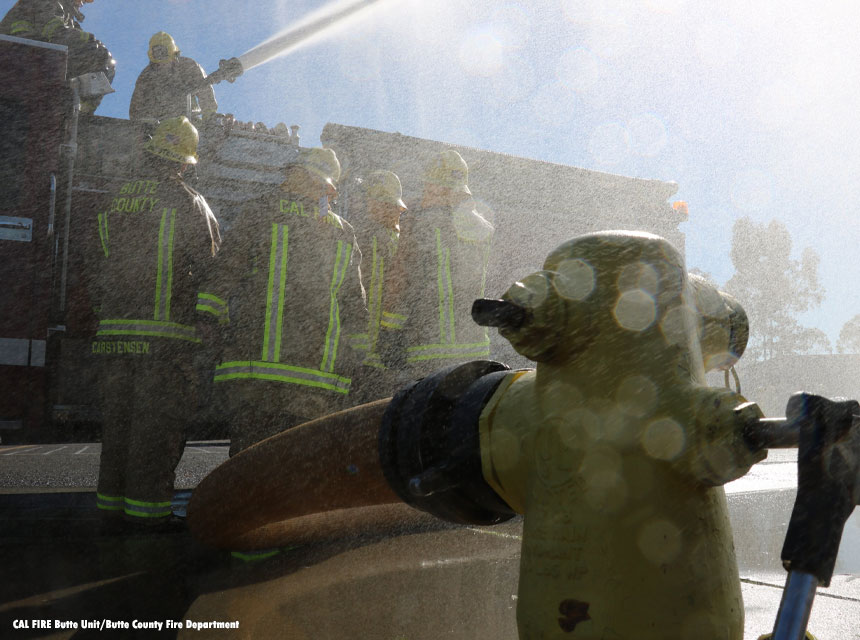
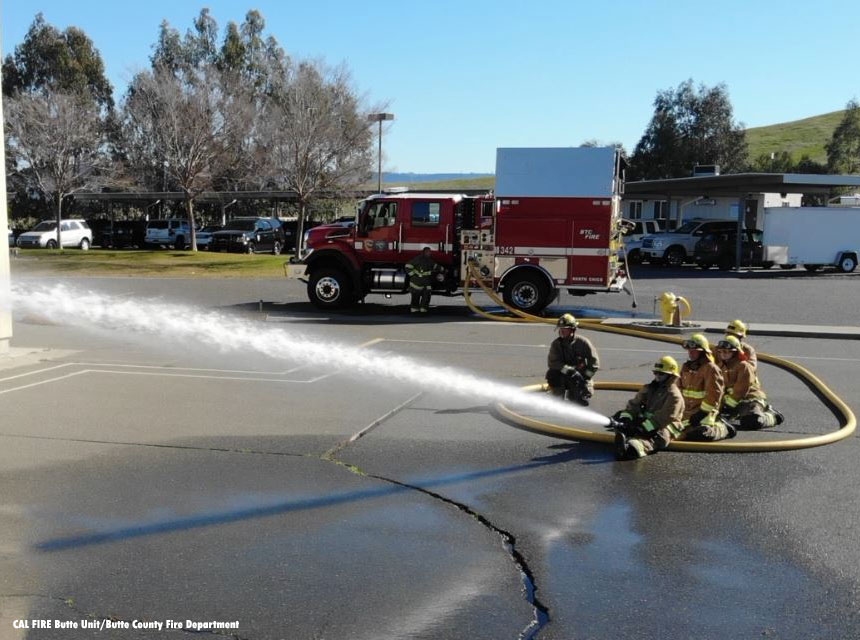
Hoselines
There are several different types of hoselines used for firefighting operations. They come in different sizes and are made of different materials. For instance, some are made with a cloth jacket over the internal component that can be made of urethane or a urethane blend. There are some hoses made of rubber without cloth covering. The 2 ½-inch hoseline is one example of this. In the fire academy, students will become very familiar with the 1 ¾-inch handline with both a smooth bore, adjustable, and fog nozzle attached. Students will also become familiar with 2 ½-inch hose, 5-inch supply line hose, and possibly 3-inch hose that is also used for supply purposes. This means it is the type of hoseline used to move water from the fire hydrant to the fire truck.
Throw Back to Basics: Hoselines
Flaking the Hose at the Front Door
Back to Basics: Pulling the Flat Load Off the Rig
The first part of learning about this topic will be completed in the academy classroom, where definitions of water weight, friction loss, and the different types of appliances that can be used with hoselines are covered in detail. The proper way to attach hoselines to an engine and to each other, deploy hoselines, manage them as an individual and with a crew, clean them, pack them, and tag them if they are damaged will also be taught and students will be tested on the material.
Engine Company Operations: Did You Know?
While sitting in the classroom and learning this material, it is easy to think: “Wow, this is a lot to remember, but it looks like fun! And it will be easy!” Well, once the classroom portion is completed and the hands-on training begins, students will see that it is fun! However, advancing and controlling hoselines requires a great deal of strength, technique, and coordination among company members. It is doubly challenging to do it in full personal protective equipment (PPE)! It is important during hands-on training to listen carefully to the instructors because it is easy to lose control of a nozzle in this learning environment. It is also important to remember to communicate about how you are feeling physically and if you need to move to a different spot in the rotation so control is not lost. Injuries can and do occur during hoseline training and evolutions. Be sure to wear all PPE including eyepro as required by the academy staff.
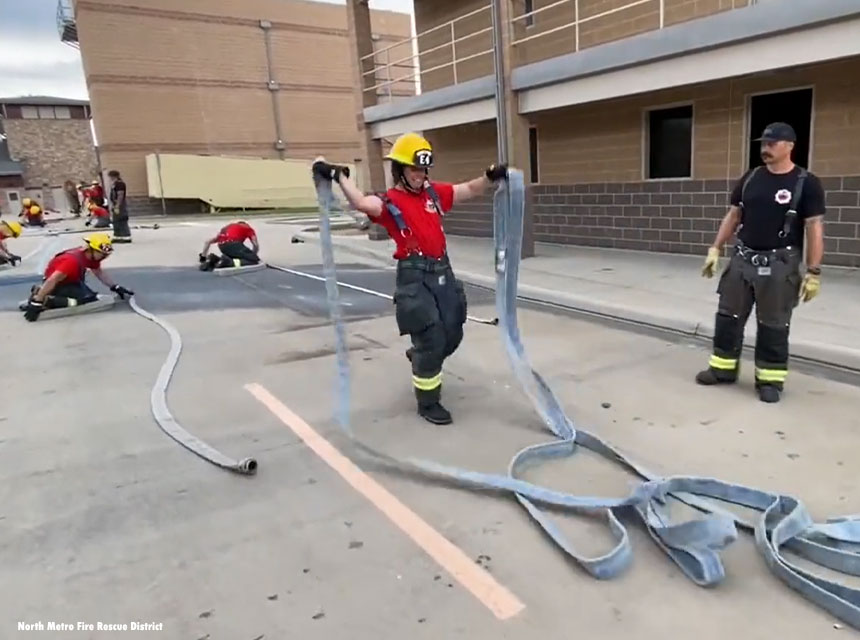
Water Supply
The water supply module is taught in close proximity to the hoseline module. In this module, students will learn quite a few interesting things that can be used as a foundation for an optional class called driver pump operator (DPO) that may be taken at another point. The water supply module teaches what fire hydrants are, the different types of fire hydrants, the pressure of the water coming out of the hydrants, and how the water gets to the hydrants. This can be considered one of the most interesting points of the class because it goes into the different types of water systems that may exist in different jurisdictions. For example, if there are water towers in a jurisdiction, it means that the water system is at least partially gravity fed. This is important because if there was a total loss of electricity, there would still be some flow. If there are no water towers, the system is likely more dependent on electrical (or other powered) pumps exclusively. This class also teaches about how water can be supplied to areas that have no fire hydrants. For many departments, there is little to no responsibility for the hydrants or the public water supply. However, the water supply module is a perfect example of how firefighters are expected to learn a little about a great many things so they know how to troubleshoot if their first choice of action doesn’t work. Lives and property are on the line in this career, so it is important to learn how things work and as many problem-solving options as possible in case they don’t!
Graduation
Fire academy graduations can vary in their size and complexity. Once thing that is consistent throughout is the excitement of the students to say farewell to the academy and join the field as a new firefighter. In some graduations, students will wear formal dress uniforms, walk across a stage, hear speeches from local celebrities and city administration, and get their badge pinned on by family members or friends. Other graduations may be more low-key. There may not be dress uniforms or a lot of fancy speeches. These graduations may take place where all of the training classes have been done. However, the feeling is the same: pride in accomplishment and joy in the camaraderie of a job well done. One thing that happens in many academy graduations is the announcement of the recruit’s station assignment. This is something often kept as a secret until graduation night. A great deal of work goes into the decision of where to place each new firefighter, so the field is excited to hear who they are getting to join their crew and the student is full of anticipation to hear the news. Once the assignment is announced, the crew and graduate are introduced to each other. This helps the first days at the station go a bit more smoothly since everyone has met in advance.
The fire academy is the place where students are introduced to the knowledge and skills necessary to safely protect lives and preserve property. The last few months we have covered many of the modules included in a fire academy setting—but there is always more to learn. Firefighters are known as being Jacks and Jills of all trades, and by the time students graduate and are assigned to stations probationary firefighters, the best will have realized what they have learned is only the beginning. Every day is an opportunity to improve. In our next article we will discuss Mayday classes and why they are important to firefighter survival!

Mandy George is a retired lieutenant in the Chesapeake (VA) Fire Department. She has a master’s degree in emergency and disaster management, a master’s degree in professional writing, and an associate’s degree in emergency medical services. She is also a Nationally Registered Paramedic (NRP) and a Virginia Office of Emergency Medical Services (VAOEMS) Education Coordinator.
FIRE SERVICE 101
Introduction to the Fire Academy: Confined Space, Vehicle Extrication, and Live Burns
Introduction to the Fire Academy: PPE, SCBA, and Ladders

